So far, we’ve discussed how to relocate to Croatia, and the cost of both public and private healthcare. Today, I present one of the more everyday aspects of the cost of living for retirees by examining the average prices of groceries.
I also draw comparisons across the top 3 most populated cities in Croatia, the UK, America, Canada, Australia.
- United States: New York, LA, Austin
- Australia: Melbourne, Sydney, Brisbane
- Canada: Toronto, Montreal, Calgary
- Croatia: Zagreb, Split, Rijeka
- UK: London, Birmingham, Glasgow
According to the Croatian Bureau of Statistics (DZS), over the last 5 years, these countries represent a significant proportion of non-EU citizens that choose to live out their retirement in Croatia.
Here’s a quick overview of the results:
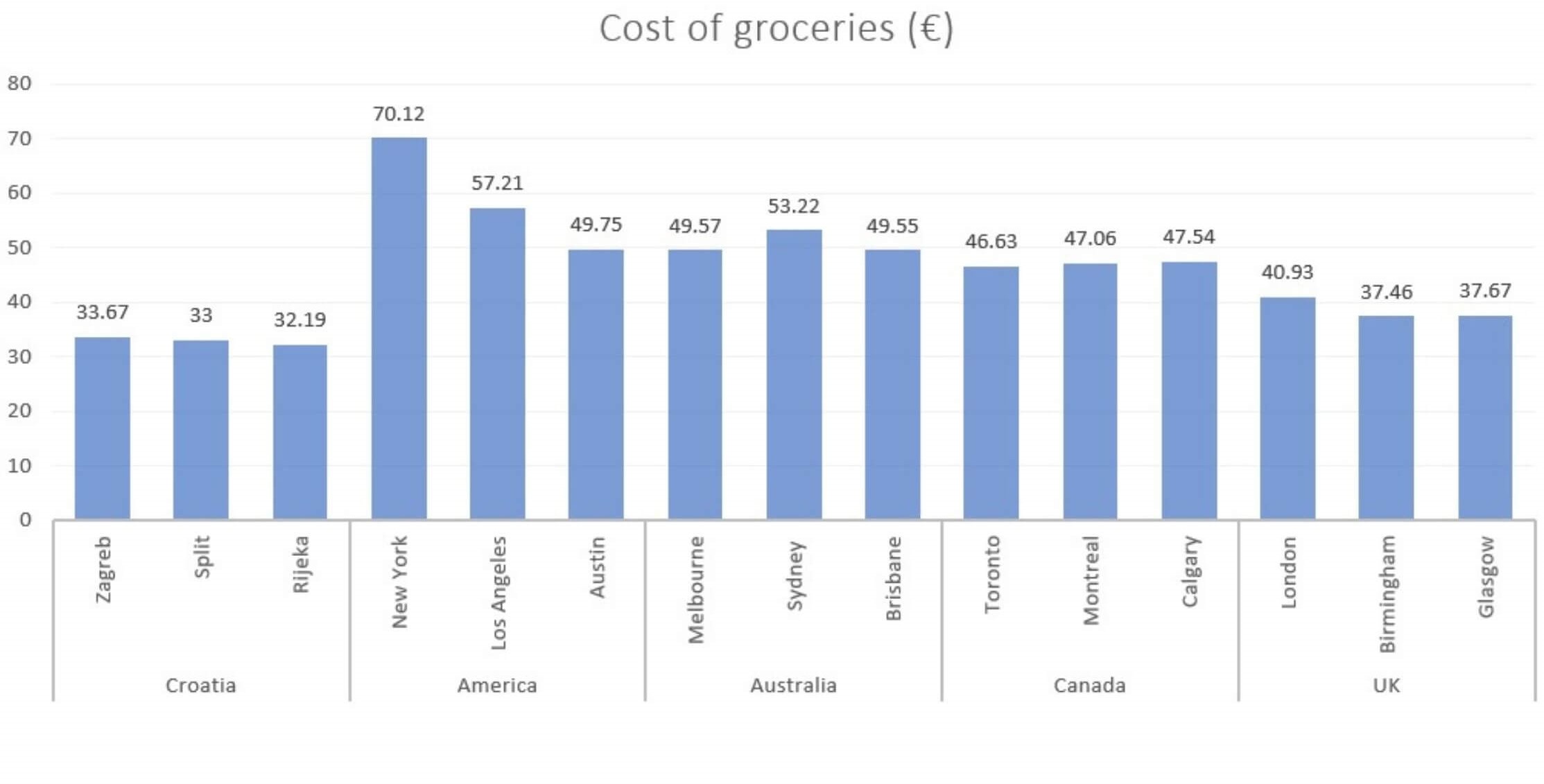
A couple of brief notes before we do a deeper dive into these figures.
Unlike the other 4 countries, produce you find in farmers’ markets or even major supermarkets in Croatia (e.g. Konzum, Ribola) tend to be more seasonal. Generally, you will be able to find year-round items such as apples, bananas, and cucumbers, other items such as beets and watermelon tend to be stocked only when they are in season, though this trend is quickly changing with the rapid rise of tourism.
The listed items also reflect a sample of groceries that a household might purchase, they are not recommendations about how much you should spend or what you should be spending it on. Food spending varies from one household to another based on a multitude of factors like income, the type of food you buy, and other factors.
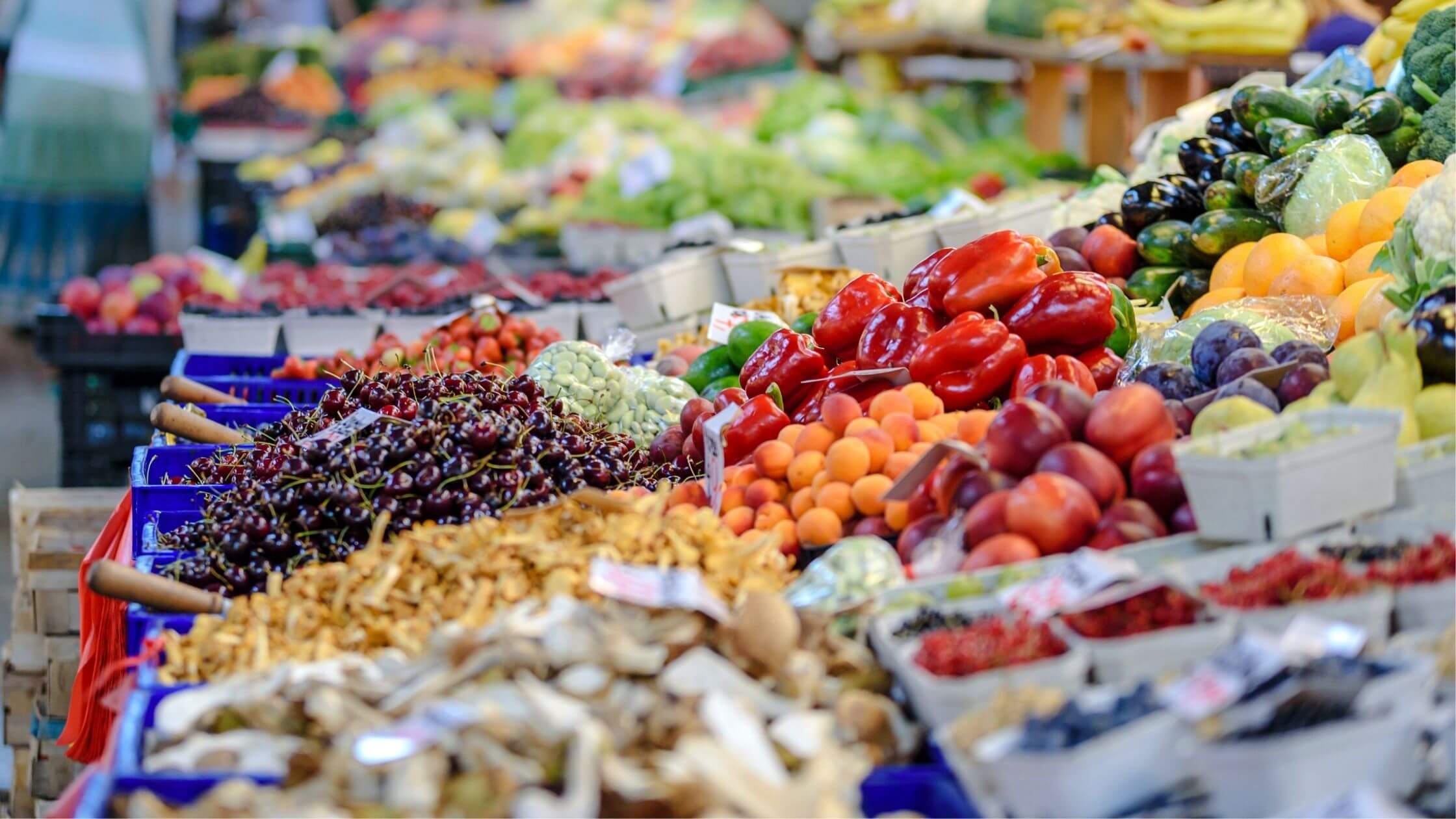
Image: Pexels.
Relative costs of grocery spend
While grocery prices in Croatia are indeed cheaper, wages in Croatia are also significantly lower than in these comparative countries on the list. The average monthly wage of a Croatian employee before taxes stands at €1,265 as of 2021, compared to €5,643 in New York.
Thus, with this sample grocery trip, a Croatian living in Zagreb spends an average of 2.67% of their income, compared to 1.24% for a New Yorker. In Calgary, the average pre-tax monthly income is €3,257 and this grocery trip cost 1.46% of that income, while in Birmingham, where average monthly wages are €2,232, these groceries make up 1.68%.
This means that the relative cost of groceries for a Croatian employee is significantly higher compared to these countries due to wage disparities.
Food trends during the pandemic
Finally, the COVID pandemic requires the acknowledgment of two key trends that impacted household grocery spending between 2020-2022, which are not accurately reflected in this sample.
The first is that food at home expenditures (e.g., grocery spending) rose during this time, while food away from home expenditures decreased due to lockdowns and mandates such as work from home. Second, global Consumer Price Indexes reflect a dramatic increase in household inflation due to supply chain disruptions, poor growing conditions, and overall economic uncertainty.

Image: Pexels.
In the years 2021-2022, the UK Office for National Statistics reports that food prices are up 4.5%. In North America, the Bureau of Labor Statistics highlights that grocery prices are up 7.4%, while Statistics Canada shows that consumers are paying 5.7% more for food. Australia appears to be bucking this trend and although the Australian Bureau of Statistics reports consumer prices have risen by 3.5%, prices for food and non-alcoholic beverages increased by a modest 1.9%.
Croatia saw a vast 9.4% increase in food and non-alcoholic beverages. However, this remains on par with other EU countries such as the Czech Republic which saw a jump of 8.8%, and Estonia with an 11% increase in food prices.
Grocery prices
Now let’s delve into the cost of groceries starting with the 3 most populated cities in Croatia. All estimates were taken from the average prices at Numeo and Price World.
Croatia
In terms of food production, the World Bank highlights that Croatia is self-sufficient in the production of wheat, corn, poultry, eggs, seafood, and wine, but a big importer of pork, beef, and surprisingly, pet food.
The first pet food manufacturing plant was only established in 2019 in Virovitica, to capture part of the €118.5 million pet food market which is now dominated by German and Italian facilities.
1€ = 7.54 hrk
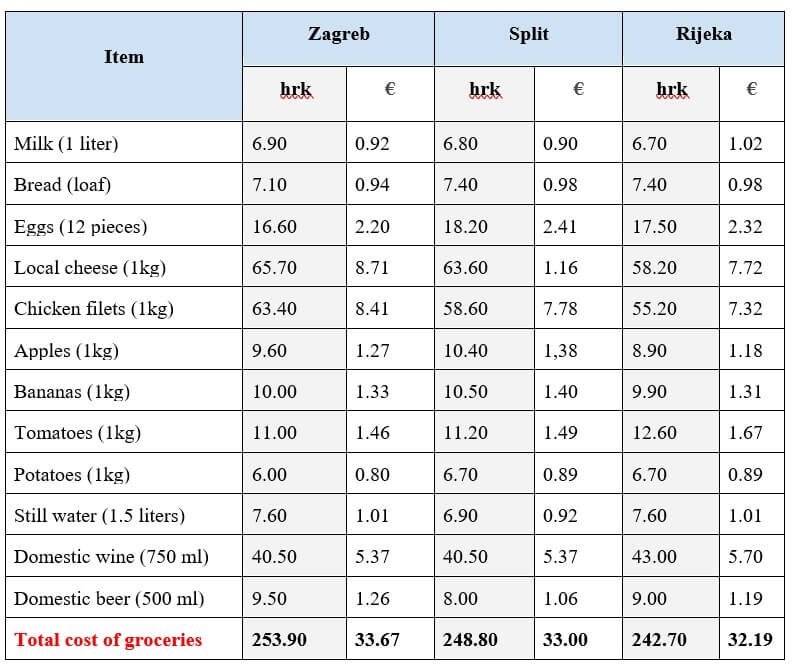
United States

Brooklyn bridge, New York. Image: Pexels.
In 2021, meat and fish prices rose most sharply with beef and veal prices increasing by 9.3%, pork by 8.6%, and fish and seafood prices by 5.4%. With these increases, Customer Expenditure Surveys by the Bureau of Labor and Statistics show that the average grocery spend per month for a household (between 1-3 people) is: $401.75/€53 in New York, $378.59/€04 in LA and $393.75/€45 for Houston
(1€ = USD$1.13)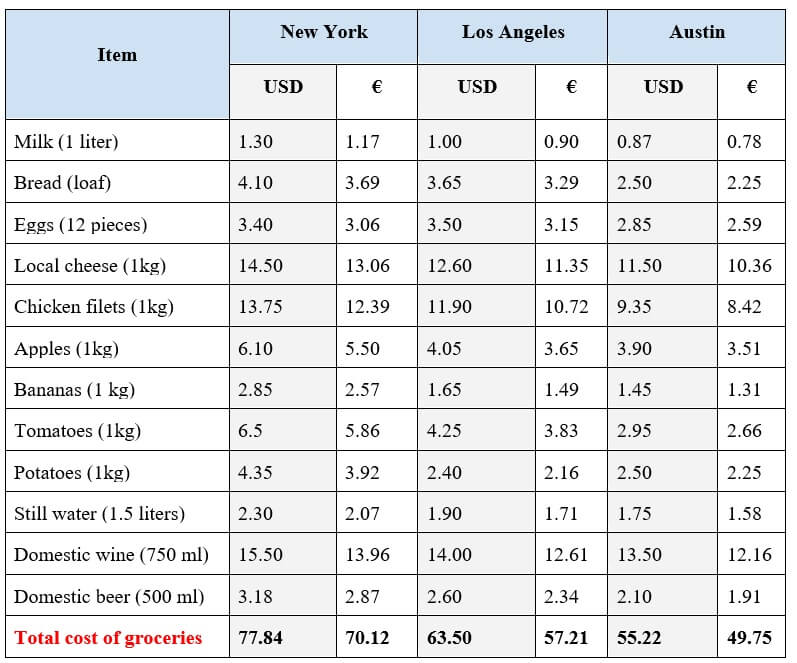
UK

London, United Kingdom. Image: Pexels.
The Office for National Statistics revealed that the average food cost for a 2 member adult UK household in 2020 was £228/month (€261) or £57 (€65.55) weekly. In the past year, prices for fresh or frozen beef have risen 13%, while poultry is now 9.0% higher. Oils and condiments such as margarine and butter are also up between 12-16% over this time.
(1€ = £0.84)
Canada

The CN Tower, Toronto. Image: Pexels.
The 2022 Canada’s Food Price Report predicts the average grocery bill for a family of 2 this year will amount to $7690.35 (€5,378) annually. This translates into $640.86 (€448.15) per month or $160 (€111.90) per week.
A significant increase in prices by 5-7% is also expected to affect dairy, vegetables, and bakery products this year.
(1€ = CAD$1.43) Australia
Australia

Sydney Opera House. Image: Pexels.
In Australia, statistics show that between 2020-2021, the CPI rose by 3.5%. Specifically, Sydney saw a 3.1% increase in consumer prices, while Brisbane and Melbourne stood at 4.3% and 2.5% respectively. Price increases were mainly driven by dairy and related products which saw a rise of 1.7%, but this was offset by a reduction in prices of fruit by 1.2% due to favorable growing conditions.
A SunCorp report revealed that the average spend per week for groceries for a single individual amounted to $135 (€86.54), or $270 (€173.08) for a couple.
(1€ = AUD$1.56)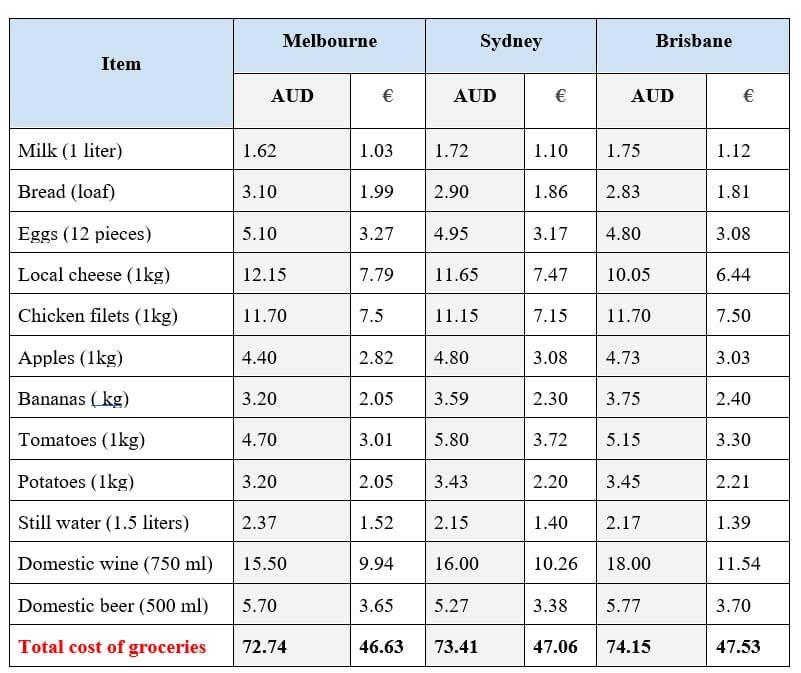 While this merely scratches the surface of how to manage your retirement income, hopefully, it has shed some light on what the cost of everyday groceries is like in Croatia compared to where you may be living right now.
While this merely scratches the surface of how to manage your retirement income, hopefully, it has shed some light on what the cost of everyday groceries is like in Croatia compared to where you may be living right now.
For more, check out our lifestyle section.










